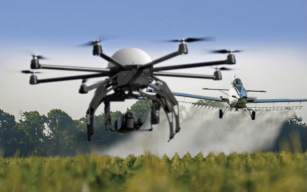NAAA receives constant reports from commercial manned and unmanned aerial application businesses about drone application work that is being conducted outside of the law. NAAA has been told that unregistered drone activities, in addition to allegations that label directions, including required gallons of carrier per acre, active ingredient measurements per acre and boom length limits, are being violated. Professional commercial applicators that apply by air—either as part of a farming business or a separate aerial application business—must be licensed.
A small drone that weighs less than 55 pounds can be flown for work or business if the operator becomes an FAA-certified drone pilot under Federal Aviation Regulations, Part 107. Those requirements, including registering one’s drone, may be found here.
To operate a drone over 55 pounds, an operator must follow the requirements under 49 U.S.C. 44807, which can be found here.
An aerial application—whether manned or unmanned—conducted by a farmer or commercial applicator must also have an agricultural aviation operator certificate under 14 CFR Part 137. Those requirements may be found here.
In addition, an aerial applicator, whether manned or unmanned, making a commercial application must be licensed as a professional commercial applicator in the state(s) in which they are operating. A list of the state pesticide enforcement agencies that license commercial applicators may be found here. Most states are treating drone applications the same as manned aerial applications, which means drone operators must follow all label instructions in the aerial section of the label, including droplet size, application height and boom length.
Enforcement against an individual or persons violating these provisions can be taken by reporting violations to the state pesticide enforcement officials, found here, or the FAA’s Flight Standards District Offices, found here.








